Who Will Manage "Old Man's Joy"?
"It's not that I can't afford an RV, but the senior electric vehicle offers better value for money."
Recently, this phrase has quietly gained popularity on the internet. At the same time, various small cars with amusing labels such as "Mini G-Class," "Super Capable," and "Bentley Disruptor" have become increasingly common on the roads of small towns and rural areas.
These "old man cars" come in various shapes and sizes; some are as small as toys, while others resemble micro motorhomes with two rooms and a living area inside. Some even claim to use range extender technology, with a range of up to 500 kilometers. Coupled with their low prices, no need for registration, and no driver's license required, "old man cars" have consistently captured the market with their extreme cost-effectiveness and zero threshold for driving, forming a trillion-yuan industry.
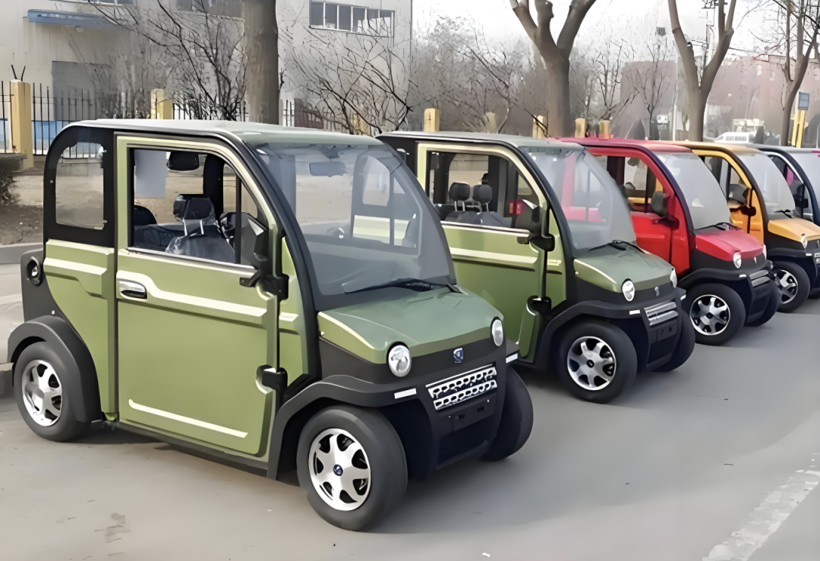
The data shows that since 2013, China's low-speed electric vehicle market has maintained a high growth rate of over 50% for several consecutive years, quickly forming an industry scale with an annual production of 1 million units, driving an economy worth 100 billion yuan, and involving approximately 1 million upstream and downstream workers. The deeper this industry scale penetrates into lower-tier markets, the more apparent it becomes.
However, amidst the rampant and unregulated growth of the "Lao Tou Le" market, hidden risks have emerged. From rampant plagiarism of original designs to poor safety performance and inconsistent product quality, the rapidly developing "Lao Tou Le" market seems to be heading down a dangerous path.
01The prevalence of "bring-it-on-ism"
In the movie "Pegasus 2" featuring Shen Teng and Jia Bing, there are many "Old Man's Joy" elements. For example, there is "Aoyun" imitating Audi, "Baoshiminjie" imitating Porsche, and "Huangbojini" imitating Lamborghini... Many people found it ridiculously funny when watching the movie, but in fact, real-life situations can be even more absurd than those in the film.
If you find yourself on the streets of a small town and see a rugged-looking car that resembles a Mercedes G-Class, but with a badge reading "Mercedes Little G" on the front; or a vehicle with a Tesla-style closed front end slowly passing by, named "Te Neng La," don't be surprised. This is merely the tip of the iceberg of the current "utilitarianism" in the old man’s car market.
Previously, a media outlet exposed an "Old Man's Joy" company, whose products feature designs that come almost 100% from various niche markets. The company not only includes outrageous knock-offs of major brands but also has a name "Mecides," which mimics "Mercedes."
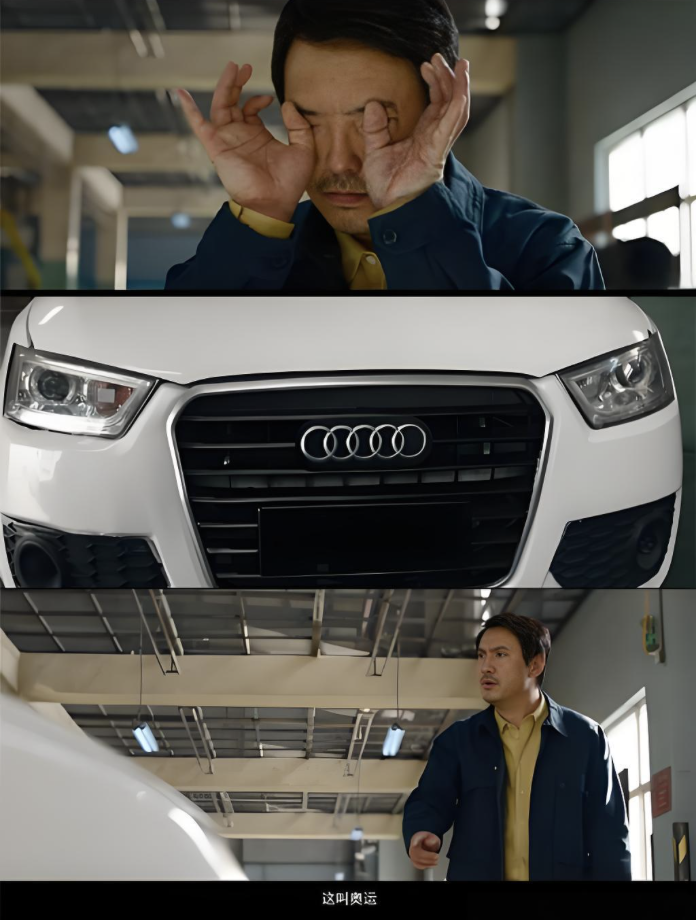
It is understood that Mercedes produces a wide range of vehicle types, covering luxury cars, trucks, off-road vehicles, SUVs, and other mainstream models. It not only has mini versions of brands such as Porsche, Aston Martin, and Maserati, but also tough off-road models like Land Rover. Even domestic manufacturers like BYD, Wuling, Dongfeng, and Great Wall Motors are not spared.
These seemingly absurd naming and imitation reflect the collective confusion and short-sightedness in design within the elderly mobility scooter market.
Due to the lack of strict intellectual property protection and regulatory constraints, many manufacturers choose to bypass the costly research and development design phase and take a "shortcut" by simply and crudely imitating and copying mature and well-known models in the market.
This kind of plagiarism is, first of all, a disrespect for original design, infringing on the intellectual property rights of legitimate automobile manufacturers and undermining the fair competitive market environment. Secondly, it leads to serious homogenization of products in the "old man’s joy" segment, lacking core competitiveness. In the long run, the entire industry will only be mired in low-level competition and price wars, unable to achieve true upgrades and transformation.
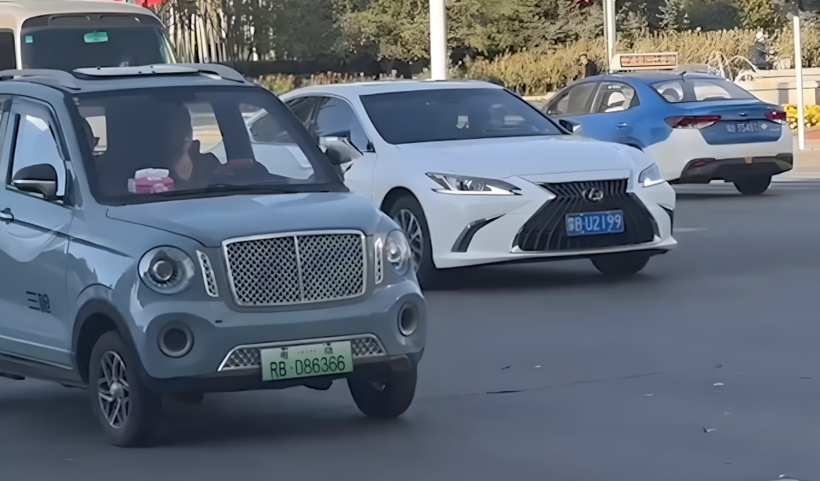
Some have jokingly suggested that if this trend continues, it might not be long before we actually see a "Rolls-Royce Phantom Mini" or a "Lamborghini Calf" on the road, and the emergence of a "Senior Citizen Fun Carrier" is not entirely impossible. However, behind the joke lies the industry's lack of innovation and weak sense of independence.
02Potential "road killer"
If design plagiarism is merely a "superficial" issue, then safety is the "substantial" problem that old-age mobility scooters are most criticized for, and it is also their biggest hidden danger.
The "Old Man's Joy," officially known as "low-speed electric vehicle," often has many manufacturers cutting corners on safety features in order to keep costs down and maintain a low price.
Among them, the most pressing issue is the frail body structure. Many "old man cars" use a simple steel frame structure, with the outer shell made of thin plastic parts, lacking any significant collision energy absorption design. In the event of an accident, the body can easily collapse and deform, posing fatal harm to the occupants inside.
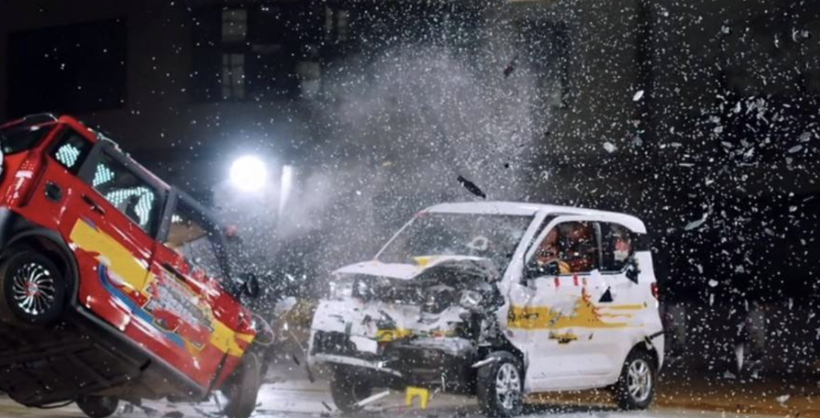
At the same time, the so-called safety features of many "Old Man's Joy" vehicles are practically non-existent. Safety devices that have become standard in modern cars, such as airbags, ABS anti-lock braking systems, and ESP body stability systems, are considered "luxuries" in the vast majority of "Old Man's Joy" vehicles. Even the most basic braking systems may have defects.
Due to the lack of safety, some netizens jokingly compare the "old man’s joy" to "an egg hitting a rock" in the face of regular cars. Once a collision occurs, the consequences are unimaginable. Its safety is nearly zero, and although being called a "moving coffin" seems harsh, it reflects the public's extreme concern about its safety.
There have been platforms that conducted collision tests between "Old Man's Joy" vehicles and the Hongguang MINIEV. The results showed that the Hongguang MINIEV only had damage to its front, with no significant deformation in the cabin, whereas the "Old Man's Joy" vehicle almost completely lost its front. This is just in comparison with the Hongguang MINIEV; in actual driving conditions, encountering family cars, large trucks, etc., any traffic accident could result in a tragedy.
What’s even more frightening is that these vehicles, lacking basic safety protections, often operate in the complex traffic environments of urban-rural fringe areas. The drivers are mostly elderly individuals with relatively weak safety awareness, and the absence of a driver's license means they have not undergone any traffic regulations or driving training.
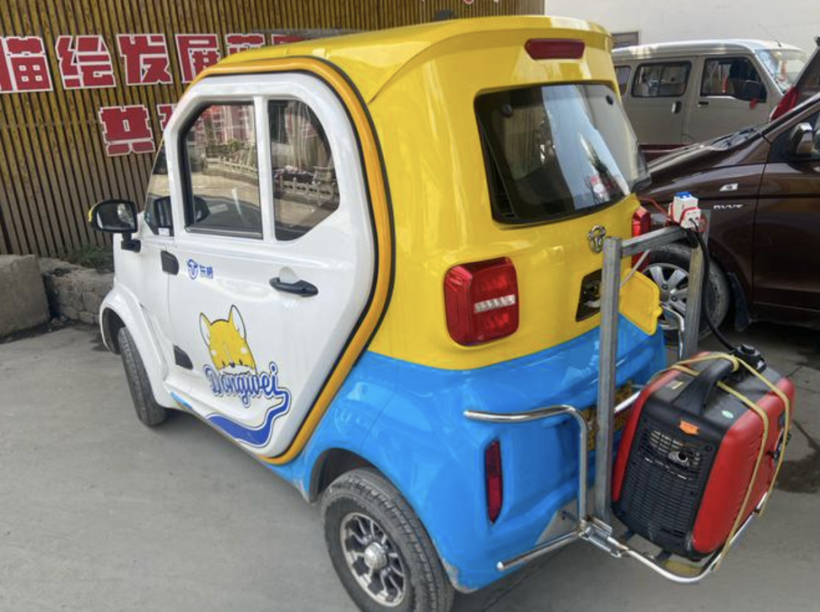
All of this combined makes "elderly scooters" invisible bombs on the road, threatening not only the safety of the drivers and passengers themselves but also posing a significant risk to other traffic participants.
In addition to design and safety, the overall quality of Laotou Le is also concerning.
Due to the low entry barriers in the industry, a large number of small workshop-style enterprises have emerged, resulting in a wide disparity in product quality. For example, countless small factories assemble components, and the quality of core parts such as batteries, motors, and electronic control systems is unstable, leading to frequent vehicle malfunctions and occasional fire incidents. The proliferation of "three no" products further diminishes the safety performance of vehicles.
Moreover, the so-called "500-kilometer range with range extension technology" is often a theoretical value under ideal conditions, and the actual use falls short, which may involve false advertising. Additionally, many manufacturers are small in scale and frequently change locations, so when vehicles have quality issues, consumers often face difficulties with complaints and lack of after-sales service.
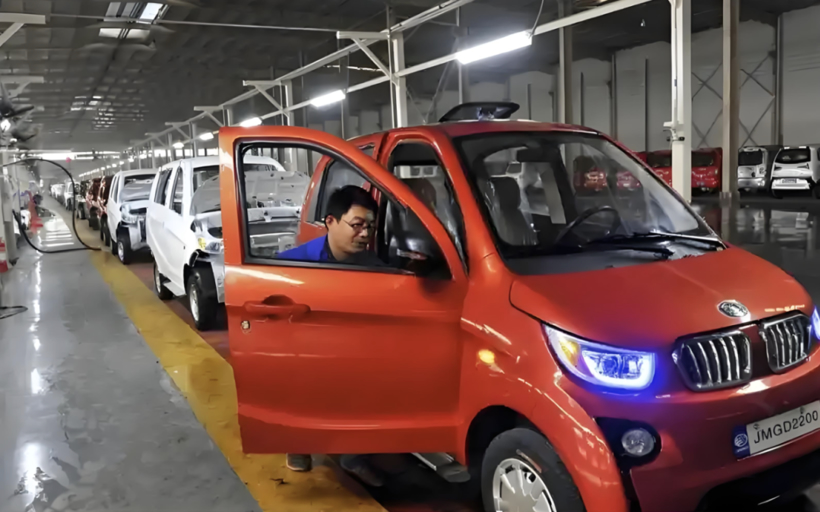
From inconsistent product quality to a lack of after-sales support, this "quick profit" model harms consumer rights and erodes the credibility of the entire industry.
03 Seven Years of Wild Growth
The emergence and popularity of "old man leisure" has its realistic soil.
It meets the short-distance, low-speed transportation needs of specific groups, especially middle-aged and elderly people. With its affordable price and low "threshold" for use, it directly appeals to a large number of users. In places like Shandong, Jiangxi, and Henan, from taking children to school to daily commuting and selling vegetables, "Old Man's Joy" has become the main vehicle for many families.
In the interview with "Automobile Commune," many users expressed that their reason for choosing "Old Man's Joy" vehicles is because they are cheap, require no driver's license, and eliminate worries about traffic jams and bad weather. Although there are misconceptions about the road eligibility of these vehicles, their practicality has attracted the attention of a large group of consumers, particularly the elderly demographic in lower-tier markets.
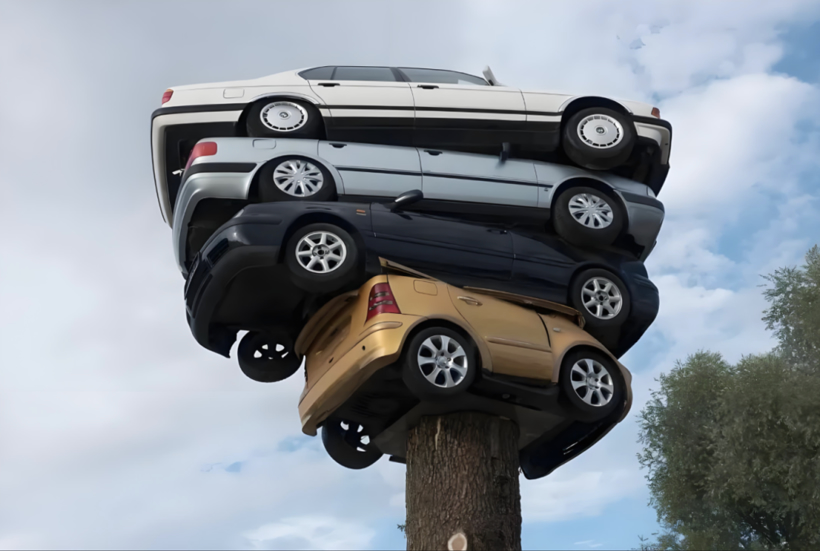
Based on market demand, the development scale of the elderly scooters market is growing larger.
Since 2013, data shows that China's low-speed electric vehicle market has maintained a high growth rate of over 50% for several consecutive years, quickly forming an industry with an annual production of 1 million vehicles, driving an economic impact of 100 billion yuan, and involving approximately 1 million employees in upstream and downstream sectors.
During this process, many companies have emerged, with Reading Auto being a typical example. From 2016 to 2018, Reading Auto, leveraging its product advantages, claimed the national low-speed electric vehicle sales champion title for three consecutive years, becoming the king of "elderly scooters," with a market share once exceeding 30%. In 2018, its revenue reached a staggering 12 billion yuan.
With the promotion of brands like Reading, Lichi, and Jinpeng, half of the elderly mobility products in China come from Shandong Province, making it a veritable hometown of senior mobility vehicles. The products of these brands also cover multiple cities within the province; for example, the Lichi factory in Dezhou has an annual production capacity of 300,000 units, while Jinpeng occupies the market with a comprehensive business layout.
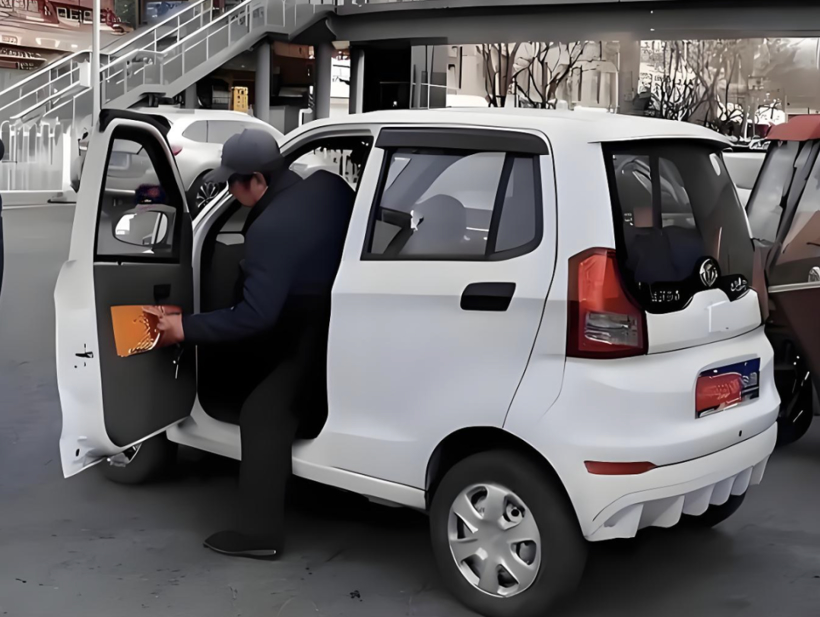
In consideration of safety and other factors, the Ministry of Industry and Information Technology in 2021 classified low-speed electric vehicles under motor vehicle management, requiring them to meet safety standards (such as crash tests, ABS systems, etc.). In 2023, multiple departments jointly issued a statement mandating the phasing out of non-compliant models by the end of 2024. Regions such as Beijing and Jiangsu have already set deadlines for banning or decommissioning these vehicles.
Due to the enhancement of safety standards, small workshops have been eliminated, and the elderly mobility scooter industry is facing transformation pressure. Some companies are shifting towards the production of compliant microcars but are encountering rising costs and competitive pressure. Even Reading, which once held over 30% market share, went bankrupt due to poor management.
04
Where is the future of "Old Man's Joy"?
Clearly, for the "elderly-friendly vehicles" market, simply "banning" and "blocking" are not the best solutions. The key lies in how to combine regulation and guidance to steer it towards a standardized and healthy development path.
At the policy level, the national government should urgently introduce a unified mandatory national standard for low-speed electric vehicles. This should include clear and mandatory regulations on key indicators such as vehicle size, weight, maximum speed, braking performance, stability, crash safety, and battery safety. By raising the industry's technical barriers, the aim is to eliminate "small workshop" style production.
At the same time, strengthen regulation on the production, sales, and service ends to eliminate "naked running" in the industry.
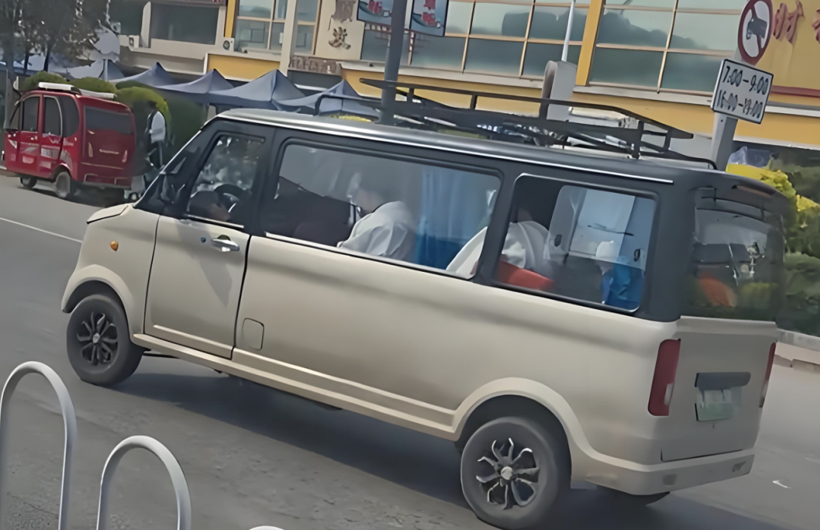
On the production side, strict measures are taken to crack down on counterfeit and plagiarism behaviors that infringe on others' intellectual property rights, while encouraging original designs; on the sales side, the sale of vehicles that do not meet national standards is prohibited; on the usage side, the road rights and management measures for "Old Man's Happy Car" are clarified. For example, it is required that vehicles be registered and licensed; the driving routes are limited; and basic requirements for drivers regarding age, physical condition, and traffic rule training are established.
Additionally, drawing on the successful experience of some previous "Lao Tou Le" enterprises that achieved new energy passenger car qualifications through compliance transformation and upgrading, we encourage capable and technologically proficient companies to transition and upgrade. These companies should aim to produce legitimate micro electric vehicles that meet automotive standards and are able to be registered and driven on the road (such as the Hongguang MINI EV level, etc.) to meet market demand.
At the same time, strengthen consumer education and awareness, allowing them to fully recognize the safety risks of low-quality "old man le" vehicles, guiding them to purchase compliant products and drive safely and legally.
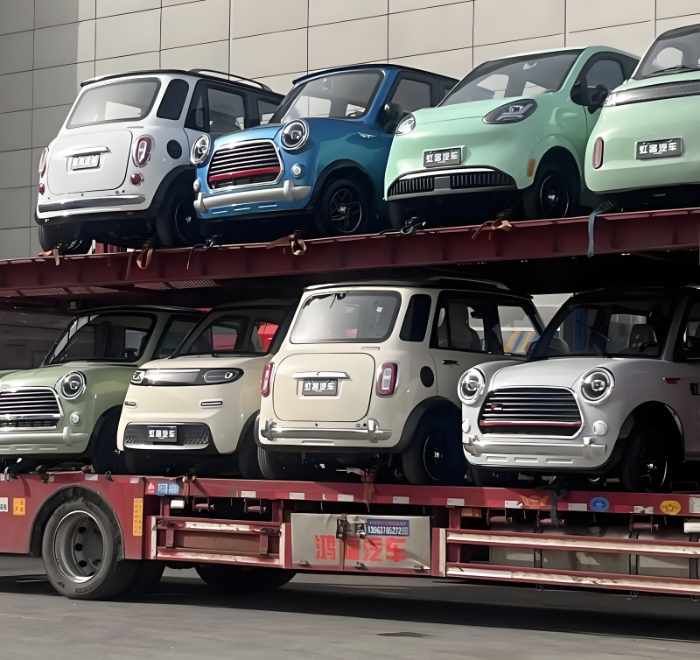
Overall, the "lawlessness" of "Laotoule" is a chaotic portrayal of the market's wild growth phase. From joking about the "more cost-effective" RV functions to criticizing the knockoff designs of "Mercedes-Benz Little Gs," as an industry participant, we cannot just stay at the level of being onlookers. The underlying safety risks and quality issues concern the lives of countless drivers, passengers, and road users.
To address the "aftereffects" of the wild growth in the elderly riding industry, it is necessary to establish standards, strengthen regulation, and promote self-discipline within the industry. This will allow the sector to transition from disorder and lawlessness to standardized development, making "Elderly Joy" a safe, convenient, and trustworthy travel choice, rather than an "invisible killer" on the road.
【Copyright and Disclaimer】The above information is collected and organized by PlastMatch. The copyright belongs to the original author. This article is reprinted for the purpose of providing more information, and it does not imply that PlastMatch endorses the views expressed in the article or guarantees its accuracy. If there are any errors in the source attribution or if your legitimate rights have been infringed, please contact us, and we will promptly correct or remove the content. If other media, websites, or individuals use the aforementioned content, they must clearly indicate the original source and origin of the work and assume legal responsibility on their own.
Most Popular
-

Zf asia-pacific innovation day: Multiple Cutting-Edge Technologies Launch, Leading Intelligent Electric Mobility
-

Mexico officially imposes tariffs on 1,400 chinese products, with rates up to 50%
-

Fire at Sinopec Quanzhou Petrochemical Company: 7 Injured
-

List Released! Mexico Announces 50% Tariff On 1,371 China Product Categories
-

Argentina Terminates Anti-Dumping Duties on Chinese PVC Profiles! Kingfa Technology & Siemens Sign Digital and Low-Carbon Cooperation Agreement






